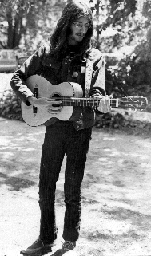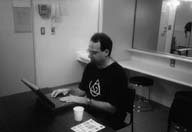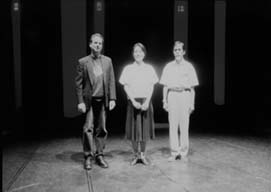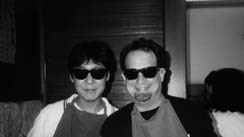SHIMODA: What made you want to become a composer?
STONE: In junior high and high school, I started to play music in kind of a group. I think we were rather special, because we played a kind of improvised music influenced by rock and jazz. I was very interested in groups like the Soft Machine, Captain BEEFHEART, and Frank ZAPPA. And my instrument was keyboards again. As I began to play keyboards, I began to experiment more and more with electronics. Then that turned into an interest in synthesizers, which were coming out at that time. Then just at the time when I finished high school, Cal Arts (California Institute of the Arts) had its first year. And they had a big electronic music studio. So it was like a kind of paradise for me.



